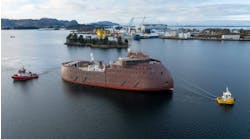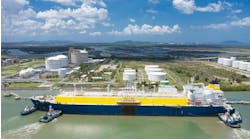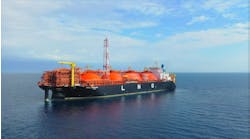Offshore staff
NEW YORK– Evercore ISI’s Oilfield Services Group has released a mid-year update to its Global E&P Spending Survey. Although it finds E&P spending still depressed overall, the analyst firm forecasted some positive news for the industry’s near-term future.
Overall, Evercore said that the decline experienced by the industry was more severe than even its own initial survey results indicated. It predicted that global E&P spending will fall another 26% in 2016 after declining 21% in 2015.
Global upstream capex is set to fall below $400 billion for the first time since 2009, and is projected to be down 42% from its record high in 2014.
“A 42% drop is by far the largest two-year decline in our survey’s 30+ year history. The expected 26% decline in 2016 is the second largest drop since 1986, when spending dropped 31% from the prior year…
“We continue to believe current spending levels, as well as oil prices are unsustainable, and the longer spending remains subdued, the stronger and longer the coming upcycle will be,” the report reads.
The firm’s forecast was buoyed by indicators of increased spending, both in the near and intermediate terms.
Around 28% of survey respondents plan on increasing 2H 2016 activity by more than 10%, “a number that could expand significantly if oil prices continue to move higher,” the report noted. About 66% would increase 2016 capex by more than 10% at $50-$55/bbl WTI, while about 24% would increase capex greater than 15% if WTI eclipsed $55/bbl.
James West, Evercore ISI senior managing director and partner of Evercore ISI’s Oil Services, Equipment & Drilling Fundamental Research, said in his presentation on the survey results that “by far most importantly, when asked about spending intentions for 2017, 73% of companies [participating in the survey] plan to increase spending while 27% plan to keep spending flat. No companies are planning further reductions.
Of those that plan to increase spending, one-third plan to increase 2017 capex by more than 25% relative to 2016.
Deepwater development FIDs
The analyst firm also discussed the two large multi-billion projects that have been sanctioned so far in 2016:Eni’s Zohr and ONGC’s KG-DWN-98/2.
The $13.4-billion Zohr project will consist of 22 deepwater wells feeding directly to a new onshore processing plant capable of producing up to 2.7 bcf/d, and is expected onstream by the end of 2017.
Meanwhile, ONGC’s $5 -billion development of KG-DWN-98/2 will consist of 35 wells (15 oil producers, 12 water injections, and eight gas producers) in multiple clusters with total production pegged at 23.53 million tons of oil and 50.7 bcm of gas.
With respect to its next finding, the update noted aDouglas-Westwood estimate that 118 deepwater development projects are viable over the next five years, with total development capex estimated at $137 billion.
“While operators continue to benefit from cost reductions and re-engineering, brave operators may execute on a few select projects in the near to medium term, particularly if commodity prices strengthen throughout the year. Nevertheless, we expect the net new resource base to be sanctioned by the industry will fall for a third consecutive year, which could set the stage for a supply short fall in two-to-three years, increasing the risk of an oil price shock if global demand is sustained,” Evercore noted.
Rig attrition
Although theoffshore drillers began retiring rigs in earnest in late 2014, the industry remains in the midst of a multi-year cyclical downturn.
“With a market recovery still a long ways off, the group reaccelerated rig attrition in recent months, bringing the year-to-date attrition total to 13 floaters and 13 jackups.
“Ensco leads with six floaters and nine jackups retired year-to-date, accounting for 46% and 69%, respectively, of the industry total. On the floater side, Transocean, Diamond, Atwood, and Saipem round out the 2016 retirements, while Shelf Drilling retired a modest three jackups and Noble retired one.
“Since 2014, the industry retired 58 floaters and 29 jackups, led by Transocean comprising 43% of all retired assets. Despite the pickup in rig attrition, we estimate about 60 jackups and 50 floaters need to be retired per year over the next few years for markets to come into balance with low 80s utilization by 2018,” Evercore said.
06/03/2016


